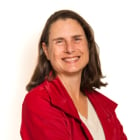BC Green Party leader is coming out swinging

BC Green Party Leader Sonia Furstenau disputes her run in a new riding and chances of members winning seats isn't a long shot. Facebook photo / BC Green Party
B.C. Green Party Leader Sonia Furstenau says she’s disrupted the province's two-party narrative before and intends to do it again in the Oct. 19 election.
Furstenau is running in a new riding, the NDP-held Victoria-Beacon Hill represented by incumbent Minister of Children and Families Grace Lore, after winning the Cowichan Valley seat twice since 2017.
Furstenau will face a “tough fight” in the riding, a NDP stronghold represented by former party leader Carole James for nearly 20 years, said Hamish Telford, political scientist at the University of the Fraser Valley.
However, Furstenau notes she’s faced the odds and won in the past.
She won her first election in Cowichan by more than doubling the Green’s baseline vote in the riding, and securing 38 per cent of the ballots, Furstenau said. In the last election, she raised the vote share to 44 per cent.
“We don't get elected by accident. We work really hard on the ground,” Furstenau said.
“We know what it takes for a Green to get elected, and we're doing the work.”
Furstenau says she’s not parachuting into her new riding. Rather, it’s a return to the family home in the riding where she attended university and raised her first son for twenty years.
If Furstenau is facing a personal battle, her party appears to be up against even greater odds. Polls suggest provincially, decided voters are leaning toward the BC NDP at 44 per cent and the BC Conservatives are right behind at 42 per cent, while the Greens trail at 11 per cent, according to a new Leger poll Thursday.
In the run-up to the election, the Green’s other elected member, Adam Olsen, MLA for Saanich North and the Islands and the party’s house leader, announced he wouldn’t run for a third time.
To date, the Green Party has struggled for visibility in the shadow of the BC United Party collapse and the rise of the BC Conservatives, Telford said.
“The dynamic [until now] is that the Greens have been left out of the conversation,” Telford said.
However, Furstenau asserts that the political narrative that this election is solely about the battle between two titan tents is outdated.
There are a number of southern Vancouver Island or coastal mainland ridings where Greens have proven themselves in opposition and repeatedly won seats, or been a competitive number two choice in recent elections, Furstenau said.
In the last “snap election” in Victoria-Beacon Hill, the Green Party came second and secured 30 per cent of the vote. Furstenau is betting she can improve on that.
Candidate Rob Botterell will run in Olsen’s former riding of Saanich North–Islands, which is a stronghold for the Greens, with federal Green Party leader Elizabeth May acting as MP for the region.
Furstenau is also highly optimistic about Green candidate Jeremy Valeriote’s comeback bid to win the West Vancouver—Sea to Sky riding. Valeriote previously lost to long-time BC United MLA Jordan Sturdy by 60 votes.
The contest in that riding, which stretches the coast from West Vancouver to Pemberton has shaped up to be an exciting three-way race.
Valeriote is up against Conservative candidate Yuri Fulmer, chancellor of Capilano University, while the NDP is fielding Whistler municipal councillor Jen Ford. Sturdy announced he wouldn’t be seeking a fourth term early in the year before his party imploded.
Green candidates have solid chances in a number of other competitive ridings, including Cowichan Valley, Powell River-Sunshine Coast, Courtenay-Comox and Esquimalt-Colwood, Furstenau added.
On Vancouver Island, the Green Party’s chances are rosier than the rest of the province, with the share of intended voters now sitting at 14 per cent. However, the NDP still dominates with 52 per cent, while the Conservatives have dropped marginally to 30 per cent.
All three parties got an equal but small boost following the demise of BC United party, but a critical 11 per cent of voters still remain undecided and may make or break races in certain ridings.
Premier David Eby still scores the highest approval rating of the leaders, sitting at 47 per cent, while Furstenau and Rustad are neck and neck at 35 and 34 per cent, respectively.
Furstenau is clear she doesn’t expect to form government, but lauds the Greens’ track record as effective opposition that holds government accountable, rather than simply looking to sling mud back and forth across the aisle as the two larger parties typically do.
“We are focused on what a representative can do and what a hard-working MLA can achieve, and Adam and I have shown that in the last seven years that we have a vision for this province that is far more positive than what is on offer from either of the other two parties,” she said.
The NDP’s recent pivot to the centre of the political spectrum by ditching the carbon tax may push the party’s more climate conscious voters to the Greens, Telford said.
Furstenau also has a good opportunity to gain some momentum if she performs well in TV debates, he added.
“There are going to be a lot of former, more liberal-minded voters looking for a political home now, and if she has a strong debate, maybe that will bode well for some strong Green candidates.”
BC United voters aren’t typically motivated by environmental issues, Telford added, but if BC Conservative leader John Rustad continues to discuss “weather” in lieu of the climate crisis, it might make him unpalatable to some voters.
“I think for some, John Rustad’s climate change denialism will make it difficult for him to win over those centrist voters.”
Rochelle Baker / Local Journalism Initiative / Canada’s National Observer






Comments
Though I respect Sonia Furstenau's very positive ascent and efforts to make the BC Green's an actual player in government along with Adam Olsen and for a while Andrew Weaver, she will need to clarify her party's involvement in the "illegal" creation of duo memberships using fake, temporary NDP memberships to forcefully place a neophyte NDP leadership candidate in the premier's chair. This in the complete absence of experience as either an elected MLA or as a manager of a large organization.
The effort to break down the NDP's backdoor collapsed and cast an extremist shadow over the supposedly level headed Greens, and destroyed an up to then promising political future for Anjali Appadurai whose naivete made her vulnerable to scheming fringe elements in the Dogwood Initiative and backwaters in the Green Party. She could have waited for another federal NDP candidacy in my riding where she came within 4% of winning last time against the Liberals, with the Conservatives very close behind.
The Greens formed a minority government with the NDP ... until it didn't. Their breakup with Andrew Weaver was quite public and stayed newsworthy for quite some time. Weaver, a climate scientist, made some concessions for industrial projects like metallurgical coal based on calculations the other Green MLAs had no time for. Weaver was slammed by climate purists in the process; Greens vehemently disagreeing with a climate scientist who did the math in peer reviewed reports with the IPCC was confusing. Perhaps both sides used faulty math. Who really knows without some neutral analysis?
Weaver had a 'Wall of Hate' posted outside his UVIC office plastered with right wing emails and anonymous notes saying they're gonna kill him during his IPCC work. After breaking with the Greens, no doubt left wing letters of hate appeared there too.
My riding is fairly strongly oriented to the NDP. I take strong exception to their stand on LNG and old growth logging. The Site C dam also stuck in my craw, but the reservoir has been filling for three weeks now and the power it will produce will be in the low end of emissions for a century. The power will sadly be directed to LNG plants. However, given the world growth in renewables, especially in China and SE Asia, not to mention Big Solar in Australia already in the works to feed SE Asia via undersea cables, I really don't see a viable future in the export markets for BC LNG. The chickens will come home to roost in the early 2030s at which point Site C will still have 80 or 90 years left, depending on the climat
... clamte affected hyrological cycle. NDP premier David Eby recently launch
... launche
...a campaign to radically expand renewables, which should make up for the end of hydroelectric growth in BC over time. Eliminating logging of old growth forests should be next on his agenda. Would the Greens credit him for any of that? Or would they aim to increase their vote share by splitting the centre left and greasing the trail for a right wing alternative? Who will the Greens support, the NDP or the Conservatives?
[Sorry for the typos. Commenting remotely from a tiny phone screen is not like using my iMac at home. And the CNO continues to refuse to address adding simple digital solutions like an edit button. :-( ]